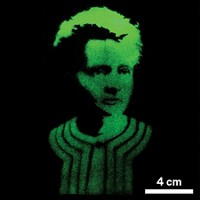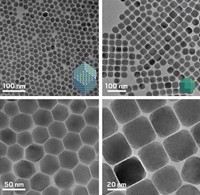Advertisement
Grab your lab coat. Let's get started
Welcome!
Welcome!
Create an account below to get 6 C&EN articles per month, receive newsletters and more - all free.
It seems this is your first time logging in online. Please enter the following information to continue.
As an ACS member you automatically get access to this site. All we need is few more details to create your reading experience.
Not you? Sign in with a different account.
Not you? Sign in with a different account.
ERROR 1
ERROR 1
ERROR 2
ERROR 2
ERROR 2
ERROR 2
ERROR 2
Password and Confirm password must match.
If you have an ACS member number, please enter it here so we can link this account to your membership. (optional)
ERROR 2
ACS values your privacy. By submitting your information, you are gaining access to C&EN and subscribing to our weekly newsletter. We use the information you provide to make your reading experience better, and we will never sell your data to third party members.
Materials
New 2-D perovskite shines white
Ultrathin semiconductor materials showcase glowing potential
by Matt Davenport
March 27, 2017
| A version of this story appeared in
Volume 95, Issue 13
Perovskites are famous for harvesting light in emerging solar cells, but the inexpensive and easy-to-make semiconductors could also provide a simple path to light-emitting devices.

Commercial white light-emitting diodes are made either by combining different colored LEDs or using LEDs that excite phosphor coatings to produce a white glow. Researchers have previously developed a few two-dimensional perovskite crystals that can emit white light without help, but scientists have yet to use them to build a working LED.
Mercouri G. Kanatzidis, Lingling Mao, and coworkers at Northwestern University have outlined perovskite crystal design considerations that could help change that.
The team developed three new lead-bromide materials using different cationic amine “spacers.” In each, lead-bromide octahedra join to form two-dimensional surfaces. These surfaces stack into layers with the organic molecules sandwiched between.
Two of the team’s perovskite crystals are flat, but the one that uses the smallest cation—2-(dimethylamino)ethylamine or DMEN—takes on a buckled, egg-carton structure. This perovskite also emits light over a broad spectrum of wavelengths, resulting in a white light source with a glow akin to that of a fluorescent bulb, the team reports (J. Amer. Chem. Soc. 2017, DOI: 10.1021/jacs.7b01312).
Edward H. (Ted) Sargent, a photovoltaic materials researcher at the University of Toronto, comments that the work is promising for perovskite LEDs. It provides a “powerful new degree of freedom: engineering perovskites via the length and shape of organic ligand,” he adds.
“This is an inorganic synthetic chemist’s dream,” Kanatzidis says of the versatility of these 2-D perovskites. “The system allows you to make changes and gives you new results every time.”





Join the conversation
Contact the reporter
Submit a Letter to the Editor for publication
Engage with us on Twitter